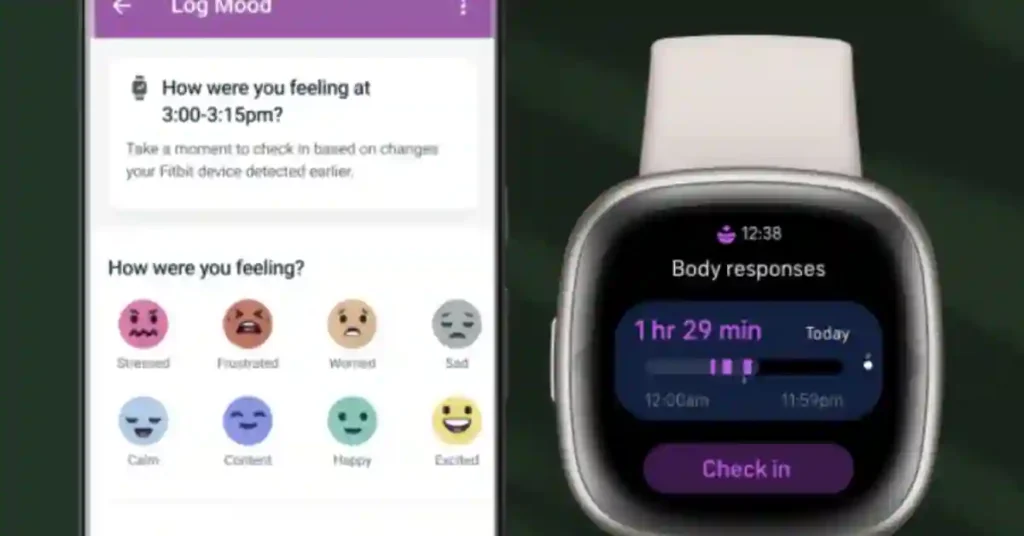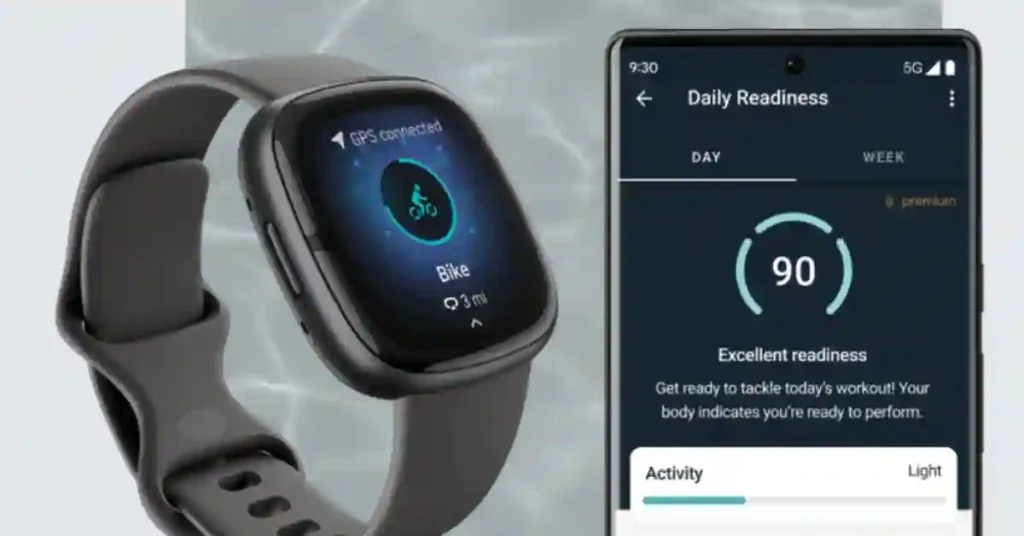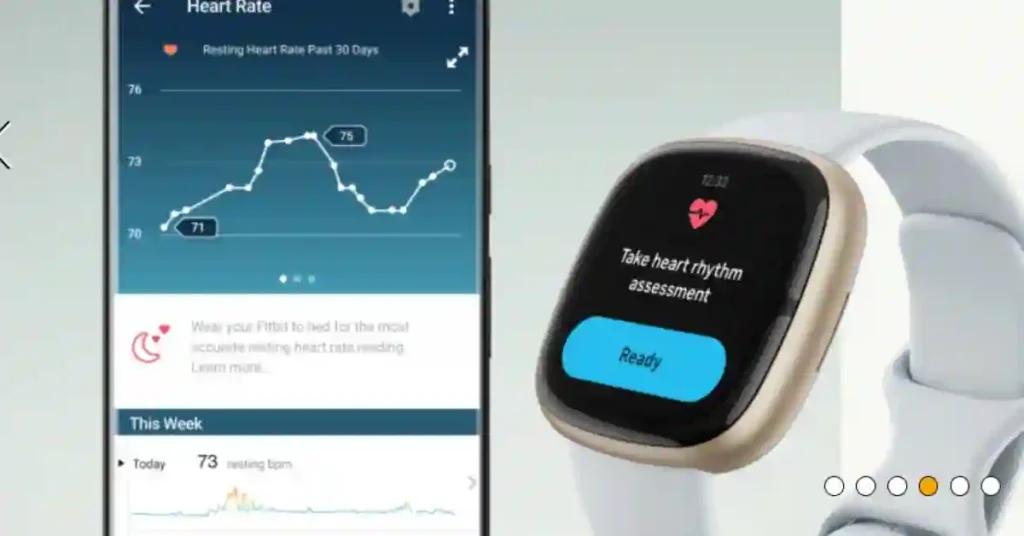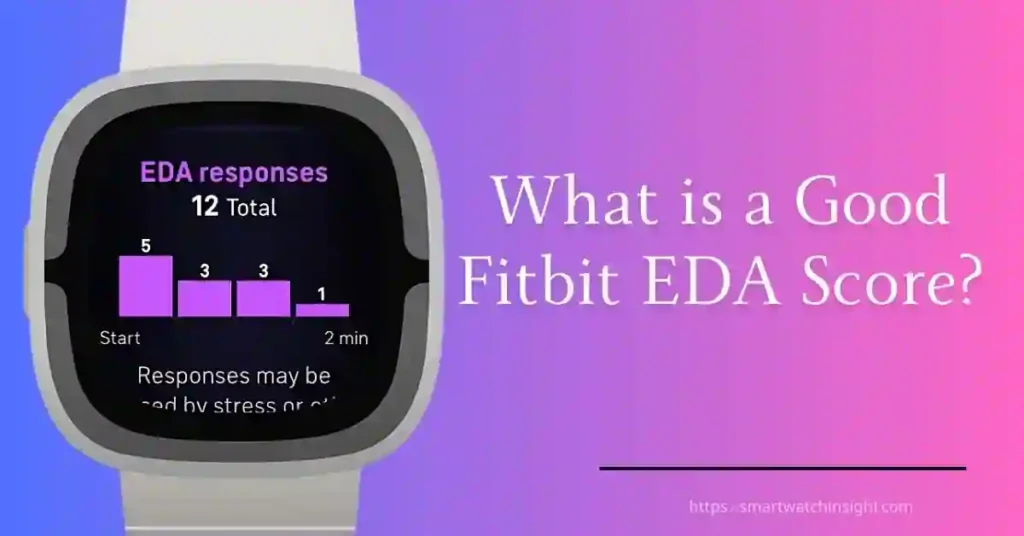Health management was utterly transformed with wearable technology, mainly fitness and wellness, as evidenced by the Charge 5. Fitbit, a leader in that domain, comes with an array of tools ranging from step counts on a day-to-day basis to sleep patterns, helping you manage your stress.
One of its recent innovations is the Activity Score, designed to give users insight into their stress levels. But what does the Stress score measure precisely, and how will it help me balance stress and recovery better?
This article critically examines what is Fitbit EDA score means, how it is related to stress, and how this data can be used to manage overall well-being more effectively; there’s a three-part article on this topic.
What is EDA?
EDA is simply the electrical characteristics of the skin that cause small changes, such as increases and decreases in sweat levels. Such changes are attributed to stress or emotional reactions. They are traceable through instruments like the Fitbit, which allows the user to track stress and how the body reacts.
How the Fitbit Monitors and Reduces Stress

An EDA sensor has been included in devices like Fitbit Sense, Fitbit Versa, and Fitbit Charge 6. The sensor measures changes in sweat levels against one’s skin, specifically in areas with high densities of sweat glands, like the fingertips. Realized by the EDA Scan App, users are given real-time feedback regarding their body’s response to stress from such changes.
EDA Score: Based on the responses of EDA, HRV, and skin temperature from the device, it ranges from 1 to 100; the higher the score, the better the stress handling/recovery represented by that score. A lesser score may show more stress or difficulty managing it, which could be stress-related.
Daily Readiness Score: This is a Premium feature, but its rollout for non-premium use offers an EDA report, sleep data, and other metrics—providing better insight into how ready your body is for huge physical challenges or when recovery may be needed.
Understanding Your Fitbit EDA Score
Your score helps you understand how your body reacts to stress through tiny changes in the sweat level. Stress in the moment. For example, after an EDA scan, a high score suggests that your body shows fewer physical signs of stress. In contrast, a lower score indicates your body might struggle with stress. This can be used to help you manage stress and understand the body’s response to stress over time.
- A higher score indicates that you are experiencing less stress and are better at recovering. Conversely, a low score may mean your body shows signs of stress.
- Quick Scan: The Fitbit device’s EDA feature allows users to do a quick scan to measure stress at the moment, while the Fitbit app offers insights into daily stress patterns.
How Fitbit Can Help In Stress Relief

Fitbit’s mindfulness sessions, available through the App and Premium, can help reduce stress. These sessions focus on deep breathing and meditation to help you reflect on your emotions and calm your stress response. Over time, using tools like the EDA app, you can monitor how your body responds to stress and take steps to improve your overall well-being.
- Help reduce stress: Regular mindfulness practices can help you track and decrease stress, leading to fewer bursts of stress and more consistent stress management.
The Role of Heart Rate and HRV
Fitbit also tracks heart rate variability (HRV), a key indicator of how your body signs stress. When combined with EDA measurements, this data helps you see how your body is reacting to various stressors and gives a clearer picture of your overall stress levels.
- Heart rate variability and skin temperature: These two metrics, along with changes in the sweat level measured by the device EDA, help you see the body’s reaction to stress more holistically. A lower score often indicates higher stress, while a higher score means your body is more resilient.
Community and Support
The Fitbit community, along with forums and advocates, provides additional support and encouragement as you work on managing your stress. The larger Fitbit team also helps develop new tools and features, such as the EDA sensor, to improve user experiences.
Devices and Features
- Fitbit Sense: This device is known for its advanced stress-tracking features, including the EDA scan and sense feature.
- Fitbit Charge 6 and Versa 2 offer pulse rate tracking, HRV, and EDA responses to help you better understand and manage stress.
By regularly using these tools, you can see how your body reacts to life’s challenges and make informed decisions to help you better handle stress, improve recovery, and live a healthier life.
What does a high EDA Scan report mean?

A good Stress score should show that you can cope with stress and achieve a healthy balance between stress and recovery, reflecting your body’s reaction to stress. So, what do we make of this score, and what kind of range should we try and aim for based on the Fitbit Versa data?
How do I interpret these numbers?
Fitbit estimates your score based on the number of EDA responses or spikes in skin electrical activity over time. These spikes indicate moments when your body is excited or stressed. Although variable, knowing the trends in your score can offer useful insight to users regarding their mental and emotional state and stress level.
Here is an easy-to-understand breakdown of how to improve your stress management score.
Low Score: It indicates a large amount of reactivity, possibly even that your body is showing difficulty coming down from an aroused state, which may affect your heart rate range. If your score has been consistently low, it could be time to learn how to relax and emphasize self-care through mindfulness sessions.
Moderate Score: A moderate score shows that things may be going well in your body’s recovery from stress. You could be having some level of stress every day, but maybe your recovery is not keeping pace. This may be a call to adopt more stress management strategies.
High Score: It indicates fewer EDA responses, meaning that your body is better positioned to handle stress and recover effectively, as your score suggests that your body adapts well. In all probability, you are in a well-regulated state, balancing tension and relaxation seamlessly.
Key Indicators of EDA Scores
Various influences over a day can change it, including factors that affect your Heart. Knowing about all these factors can help you control stress better.
Physical Activity: Exercise, especially vigorous physical exercise, may elicit some EDA reactions. However, regular moderate physical activity generally decreases stress in the long term by improving overall well-being, which can be monitored through a mindfulness session.
Emotional States: EDA spikes can be caused by anxiety, excitement, or frustration, which can be managed through the tools available in the community. The emotional toll of daily life, at work, and in your situation plays a huge part in how our body reacts.
Potential stress in the environment: Bright lights, loud environments, or fluctuations in temperature are possible factors affecting your EDA readings.
Quality of Sleep: Insufficient sleep increases stress, leading to fewer physical stress signals, which you can track with your Fitbit Versa. Less sleep impairs the body’s management of stress responses and thus increases the Activity (EDA) Score.
By identifying such factors, people learn more about how lifestyle elements contribute to general stress and can engage in activities that help them proactively enhance their well-being.
How to Read and Improve Your Fitbit EDA Responses

Simply monitoring your wellness index should be your next beginning. Take that data and start interpreting what to do to get better at recovering from stress. Here are some practical tips:
1. Habits of Mind
Among the best ways to decrease stress and cut your score is to be mindful. These include exercises like meditation or breathing exercises. Such practices can assist in regulating the body’s response to stress and thus lower the stress level in real-time and the long term.
Meditation: Just a few minutes of concentration on breath can help decrease the sympathetic nervous system’s activation, thus triggering the fight-or-flight response and contributing to a better stress management score.
Deep Breathing: When stressed, breathing exercises help reduce heart rate and decrease stress responses, leading to fewer EDA spikes.
2. Physical
Routine physical activity is, on the other hand, one of the best ways to reduce chronic stress. Intense workouts might raise EDA in the short term, but they improve the ability to deal with stress in the long term.
Mild aerobic exercise: Walking, jogging, or swimming reduces stress and promotes good heart health, which is linked to stress.
Strength Exercises: Integrate strength exercises into your workout. This will enhance your mental and physical resilience, contributing to a better stress management score so you can resist stress more effectively and experience fewer physical signs of stress.
3. Better Sleep Hygiene
However, poor sleep increases stress, which is more likely to cause frequent EDA feedback from the device.
Consistent Bedtimes: Get to bed and wake up at the same time to improve your overall stress management score and maintain better heart rate variability. This primes your body and helps regulate its stress response, mainly when focusing on mindful sessions.
Create a Relaxing Sleep Environment: To support your stress management score, eliminate disruptions with a cool, dark, quiet bedroom and avoid screens before bed.
4. Create Empowering Relationships
Emotional support is a powerful tool for managing stress. It can positively affect your stress control index and help you connect with the community. Supportive friends, family, or colleagues may act as a buffer from your daily stress, helping you deal with stress more effectively.
Sharing Concerns: Expressing your stress to a trusted other can relieve some emotional weight and promote emotional resilience.
Build Social Ties: Engaging in meaningful conversations and activities with others helps reduce feelings of isolation and stress, as discussed in forums and advocate groups.
Conclusion: Monitoring Your EDA Score
Your stress level score provides insight into your body’s emotional resilience, enabling and empowering you with insights on managing your way out of stress and towards better well-being. By actively monitoring and understanding your score, you can quickly identify what triggers bring you stress and activities or actions that help you recover.
Knowing your electrodermal activity score is more than understanding when you may be stressed; it’s the power to track and manage stress effectively with tools like the Charge 5.
You can decrease stress and move towards a much healthier and balanced life by using active mindfulness techniques, improved sleep patterns, and regular body movement exercises.
Frequently Asked Questions
q. How often do I need to assess my EDA?
Monitoring is advised daily, especially during times of high stress, to gain insight into how the body is processing the stress and recovering at any given time.
q. Will the EDA Scan report from my Fitbit aid me in managing my stress?
EDA reveals data on how your body reacts to stress, thus guiding you to start using good stress management techniques.
q. What activities are recommended to increase the Electrodermal Activity (EDA) Score?
Examples of such activities include yoga, breathing, and physical exercises, which can be practiced routinely to ensure relaxation and strengthen stress recovery, ultimately improving one’s stress control index
q. What factors make my Physiological Response score?
Many aspects affect you, such as physical activity, emotional state, environmental stressors, and quality of sleep, which can all be tracked and managed through the app.
With the potential of EDA tracking from Fitbit Charge 6, you can now learn more about your stress levels and take proactive steps towards leading a better-balanced, healthy life.

